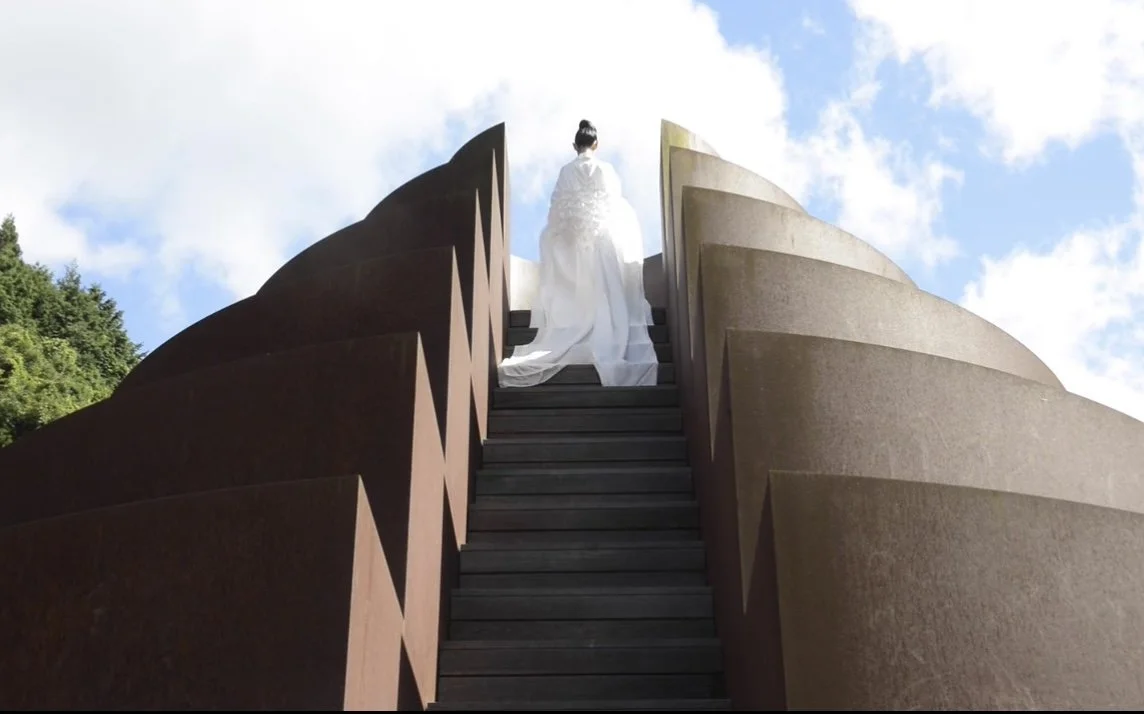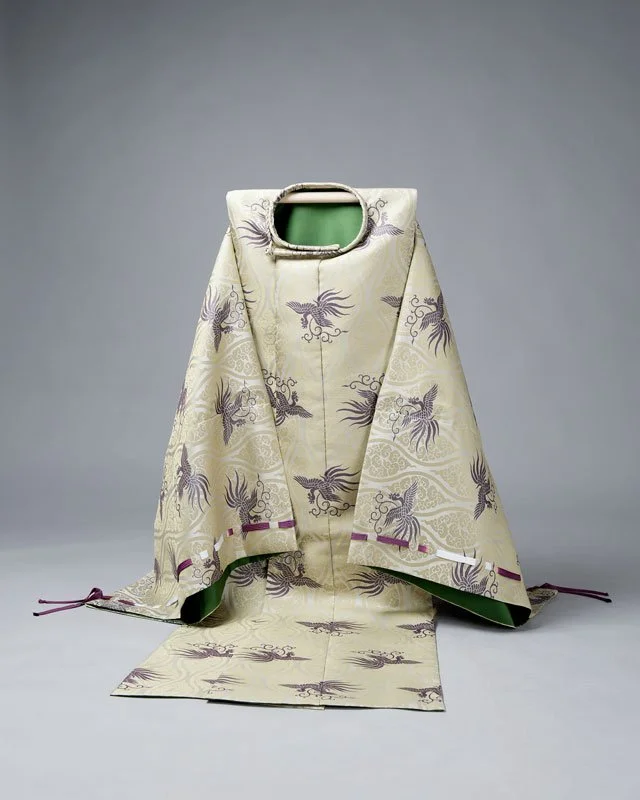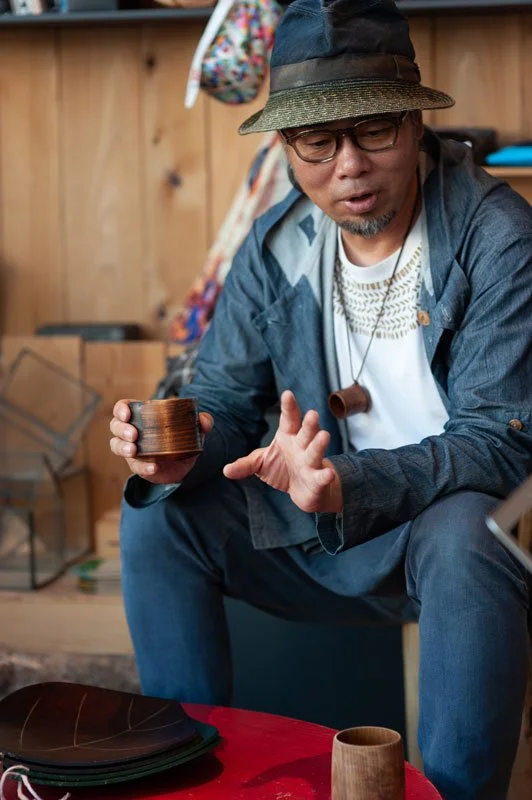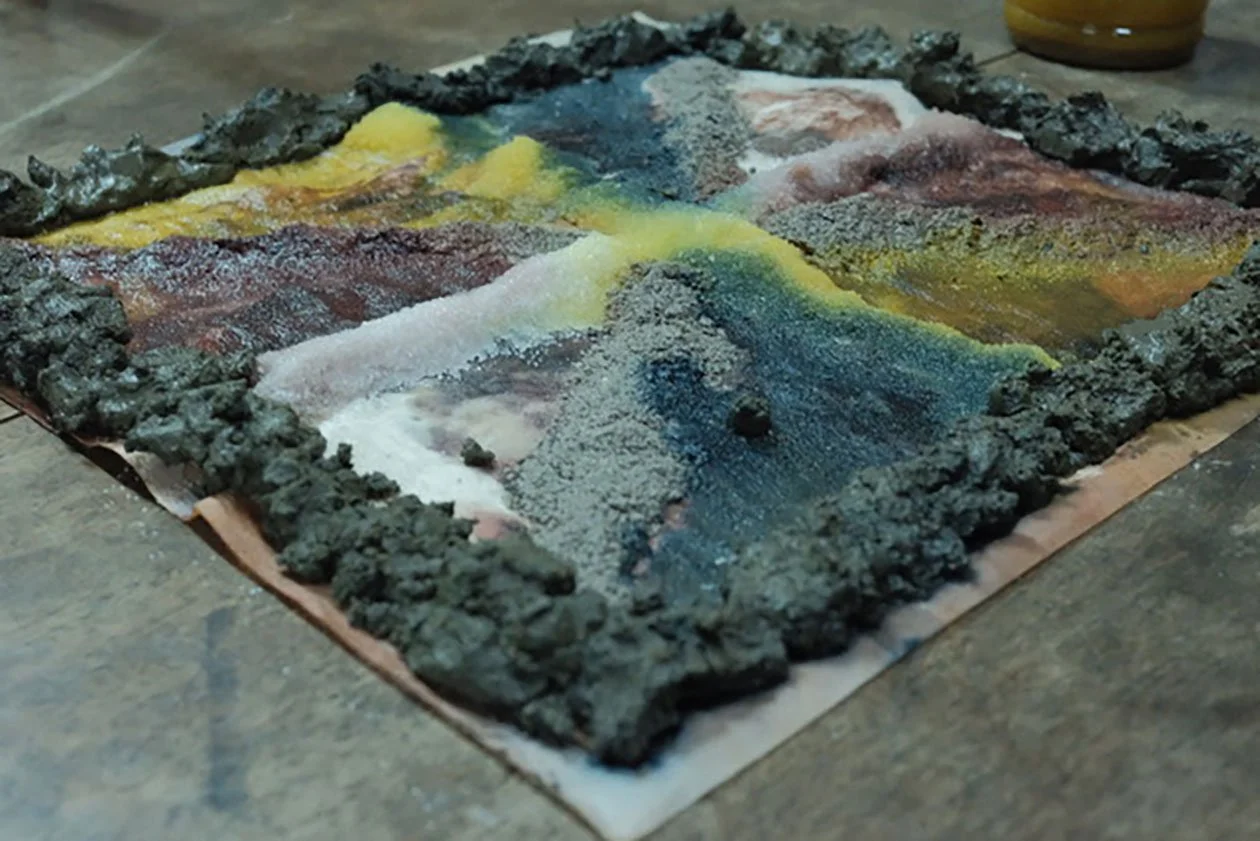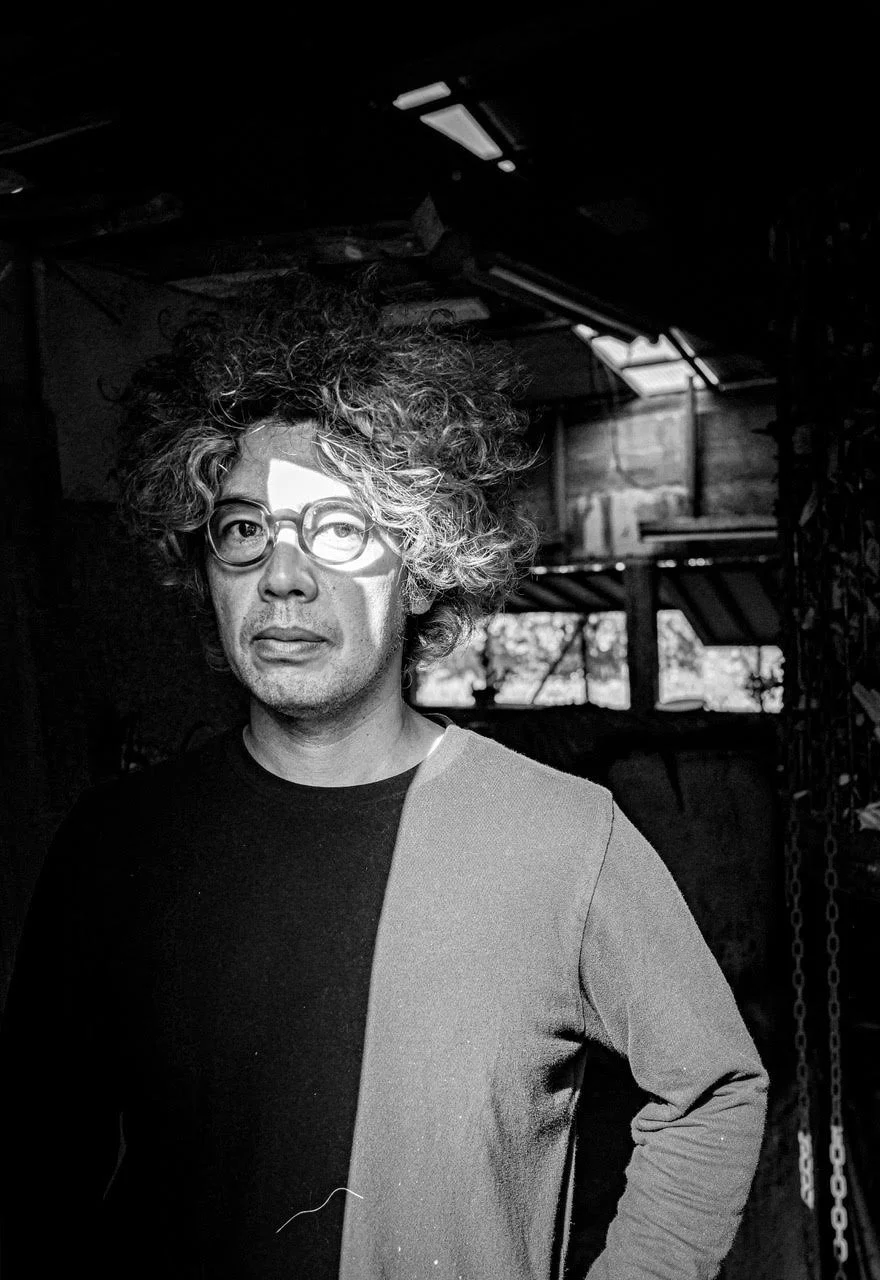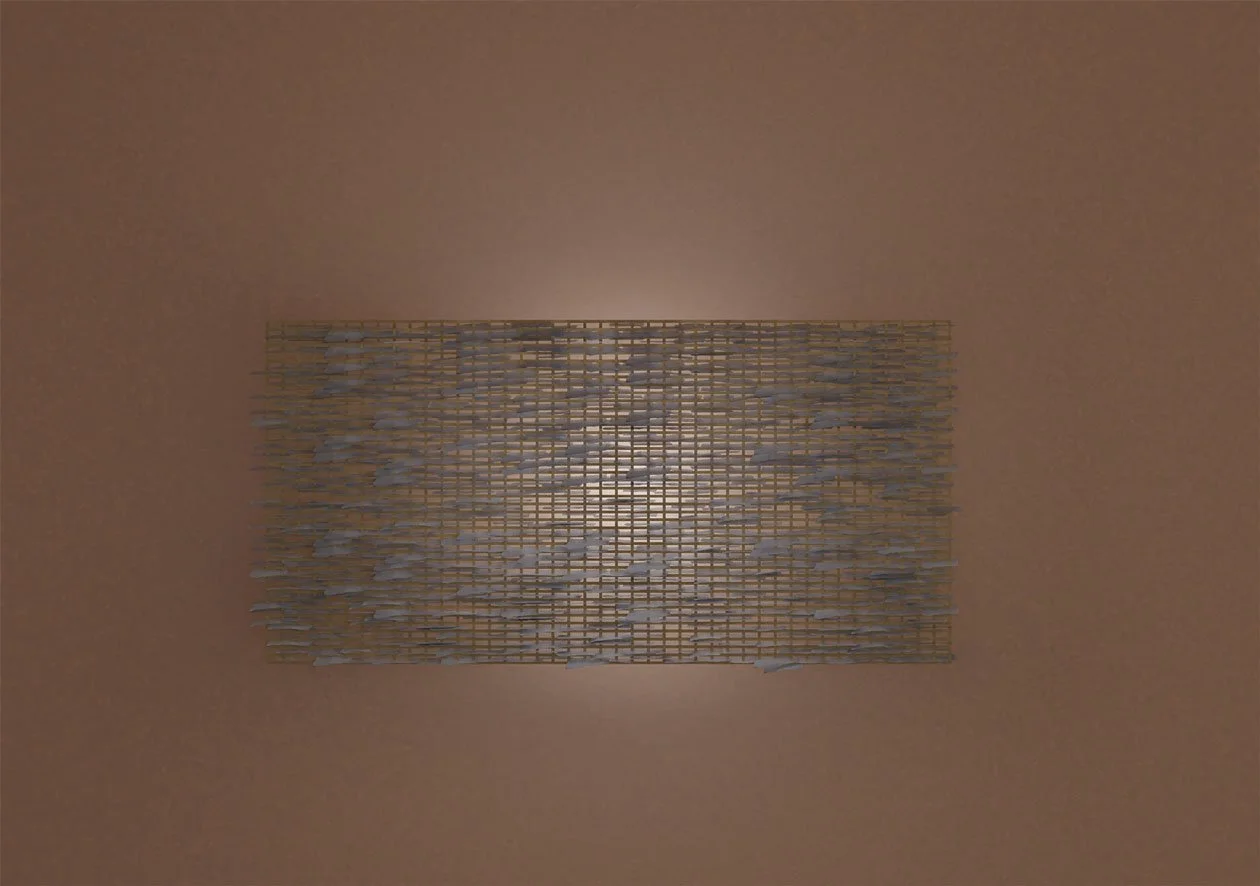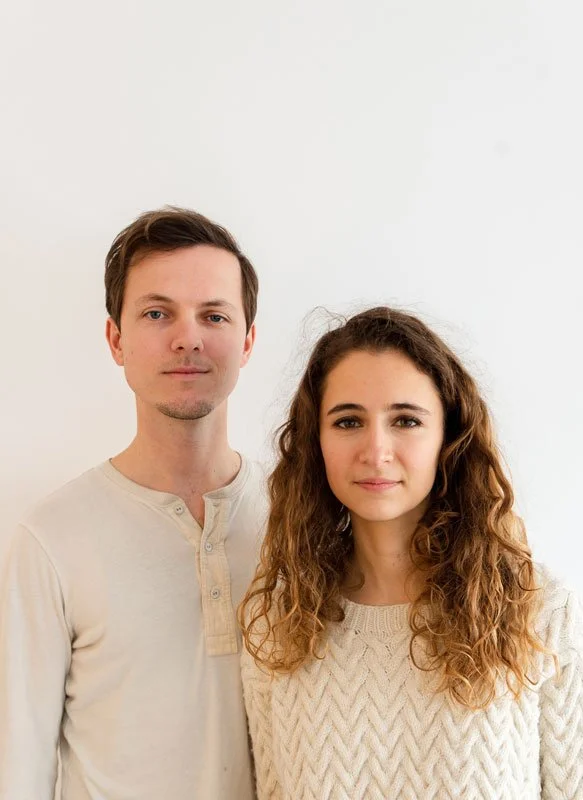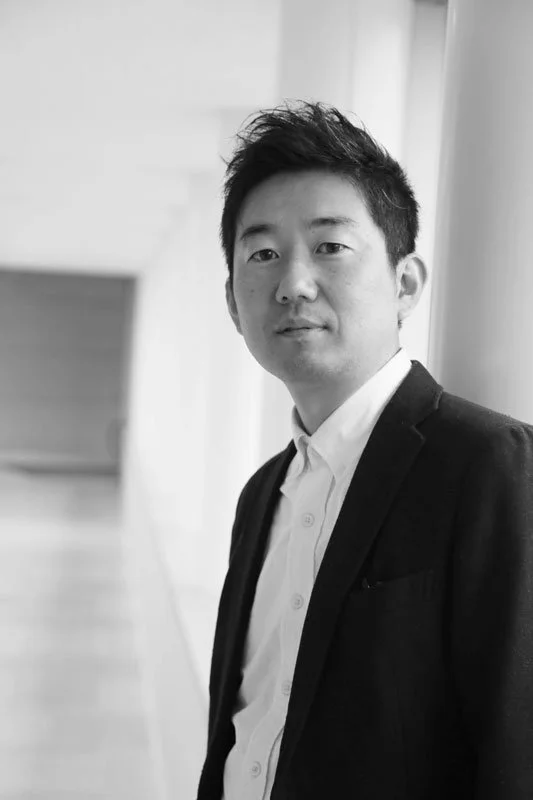MJ Artists in Residence - 2019-2021
EXHIBITION
Dutch x Japanese Creative Collaboration Exhibition
This exhibition introduces the culmination of the two Dutch x Japanese creative collaborations carried out with MONO JAPAN AIR from 2019-to-2021, as well as new initiatives from past collaborations.
We asked ourselves: What is the potential of introducing Dutch creators to various materials and traditional Japanese crafts that transcend the boundaries of art and design? What do people feel and why do they want to be involved in the traditional craft industry, despite its apparent inefficiency?
Jonas Althaus - Sensory Washi Paravent
MJ AIR 2019 - Sensory Washi Paravent
Jonas Althaus
Designer
Sekishu Washi Workshops Kubota and Nishida
Sekishu Washi Craftsman
Sensory Washi Paravent
How can traditional crafts and local knowledge inspire new technological aesthetics? Based on the original method of Sekishu Washi, the designer and artisans developed an electrically conductive paper. As part of a shoji-inspired paravent, this smart material forms a large sensor: At the touch of a hand, areas start to glow, pulse or change the hue of light.
During his 2019 AIR in Shimane (Japan), designer Jonas Althaus had the chance to tie in with the 1500 year old UNESCO cultural heritage of sekishu washi paper making. How to deal with such craft heritage today - conserve or update? In Japanese architecture, handmade paper was once widely used to build shoji paper walls (famous for their interplay with natural light), but lost its popularity in modern homes, which more and more buries the handed down knowledge in oblivion.
In close collaboration with the craftsmen Jonas Althaus worked on an unorthodox addition to the original paper recipe: Enriched with conductive supplements like carbon strands the hand crafted sheets turn into sensors receptive to touch, proximity or air-humidity.
In the design of ‘Sensory Washi Paravent’, the conductive washi covers the whole surface, allowing visitors to feel the unique softness of Japanese paper - and to trigger a response: At the touch of a hand, areas start to glow, pulse or change the hue of light. Such spectacles refer to the traditional beauty of daylight diffusing through shoji walls.
Through its development and use of a hand-made smart material, this work explores new technological aesthetics based on traditional crafts and local knowledge.
Jonas Althaus (in collaboration with Sekishu washi)
Jonas Althaus is an artist and designer focusing on social interfaces and variants of human-technology interaction and communication. Topics like embedded values in technologies, living environments and social implications of new media crystallize in various objects and installations. With his fascination for gestures, materials and haptics, he is creating bridges between digital- and physical realms which sensually enrich and inspire their users. This can e.g. be seen in the work ‘Tidal Space’ (2021), a vision for family friendly home offices.
Website | Instagram | Facebook
Sekishu Washi Kubota, Nishida Washi Studio (Sekishu washi, Shimane Prefecture)
The two studios collaborating in the project are the only surviving makers who produce Sekishu washi entirely by hand, from the cultivation of paper mulberry to manufacture of the washi.
sekishu.jp
Maryam Kordbacheh - “Poetry of Clothing”
MJ AIR 2019 - “Poetry of Clothing”
Maryam Kordbacheh
Fashion Designer
Yoshida Shozoku
Traditional tailor producing Shinto priest costume in Kyoto
“Poetry of Clothing”
“Poetry of Clothing” is a material and shape research, focuses on the conceptual and philosophical view to the design process, studies and questions the fundamental aspects of design. “The poetry of clothing” investigates garments beyond their material meanings. A timeless, clever and intuitive approach to clothing. Funded by Dutch Stimuleringsfonds.
“Poetry of Clothing” is a photo series capturing the interaction between the garments and calm serene natures of Japan. Where the sounds of birds, rivers, wind and mountains blends in with the garment. A journey from Lake Biwa to the deep forest of Wakayama. A Collaboration with fine art photographer Hiromi Kakimoto.
“Poetry of Clothing” is developed based on inspirations and knowledge gained from two month’s residency in Kyoto Japan. In collaboration with Japanese craftsman Yoshida Shozoku, Maryam Kordbacheh experimented with highly valued Japanese techniques and created new designs that reflect modern times yet emphasizing the timeless aesthetics. With support of MonoJapan.
Maryam Kordbacheh (in collaboration with Yoshida Shinto priest ceremonial costumes)
maryamkordbacheh.com
Yoshida Shingi Shozoku (Shinto priest ceremonial costumes, Kyoto)
Yoshida Costume Shop assembles the skills of Kyoto artisans to produce Shinto priest attire and other various costumes, Shinto shrine furnishings and festival objects.
shouzokushi.com
MJ AIR 2019 - Shikki Lacquerware prototypes
Pao Hui Kao
Designer
Aizu Shikki
Japanese lacquerware craftsman
Shikki (lacquerware) are made by applying many coats of resin, harvested from trees such as poison oaks or black trees before the lacquered items are decorated using various techniques.
The making of Shikki contains more than thirty processes, which can be roughly divided into three phases; woodwork; lacquering; and decoration. Pao has visited those specialized craftsmen in the region.
In addition to visiting various craftsmen, she also had opportunities to visit the urushi tree farm as well as joining a traditional Japanese food gathering to experience 100-year-old tableware lacquered with urushi.
Kao Pao Hui presents her laquerware prototypes during the exhibition.
Kao Pao Hui (in collaboration with Aizu lacquerware)
Pao Hui Kao completed a Master of Arts at the Design Academy Eindhoven in 2016 and now she works as an object maker and material researcher in the Netherlands. Her work blends innovative use of materials, traditional craft, and social issues guided by constant research and experimentation. Pao is selected as the finalist in the 2022 LOEWE Craft Prize with her work 'Urushi Paper Pleats Bench', which is developing from her residency experience in Aizuwakamatsu with MONO Japan in 2019.
Sekibi Kodo (Aizu lacquerware, Fukushima Prefecture)
Est. 1946. With a theme of “living and playing with wood and lacquer”, Sekibi Kodo offers lasting value that makes the most of traditional skills of Aizu lacquer that have continued for more than 430 years.
sekibikodo.jp
Local craftspeople who realized the prototypes
Painting: Takao Togashi, Manami Komatsu
Kintsugi: Ryukichi Igarashi
Drawing: Nami Mashiko
MJ ONLINE AIR - Mud dye
Paul Beumer
Artist
Yukihito Kanai
Mud Dye Craftsman and Artist
The Kanai-Beumer team conducted an experiment by applying different colours and materials to each of four pieces of cloth, resulting in a multicoloured textile. The wooden boards and washi used as underlying sheets for the dyeing also created a unique texture, and became part of an appealing experimental work in progress.
Artist, Paul Beumer
Paul Beumer is a Dutch artist working with dying techniques on barkcloth, cotton and paper. He has widely travelled in Asia and also stayed in Japan for several months. Paul's artwork integrates Asian elements in his recognizable modern European textile techniques.
Website of Paul Beumer
Mud Dye Craftsman and Artist, Yukihito Kanai
Yukihito Kanai is the owner and chief dyer at the KANAIKOUGEI - KANAI Mudding Works in Amami Ohshima, in Western Japan. Their craft - dorozome – is a traditional and natural method of muddying typically used to create the dark colors of kimono silks for Amami Ohshima Tsumugi (handwoven) Silk.
Website of KANAIKOUGEI
MJ ONLINE AIR - Bamboo
Studio Nienke Hoogvliet
Design studio
Chikara Kojima
Bamboo crafts Artist
Ōita City
Nienke Hoogvliet and Tim Jongerius of Studio Nienke Hoogvliet who are known for their various projects on the theme of sustainability, collaborated with bamboo crafts artisan Chikara Kojima.
Studio Nienke Hoogvliet learned about the history of bamboo, discovering its beauty and possibilities as a raw material, which triggered a strong interest in social problems related to bamboo craft, including the manufacturing process, labour, and environmental damages caused by unmanaged bamboo forests.
Despite the lack of being on-site to touch the materials and freely conduct experiments, Chikara devoted a lot of time to explain the material qualities and manufacturing process. This gave shape to Studio Nienke Hoogvliet's unconventional design idea using bamboo weaving.
Studio Nienke Hoogvliet
Studio Nienke Hoogvliet is a design studio based in The Netherlands. Through their material research, experimental and conceptual approach they use design as a tool to shape new perspectives. For the ‘Bamboo’ project for MONO JAPAN AIR Nienke collaborated with Tim Jongerius, who practices design and architecture. Recently they worked together on the Value // Values project, researching how transparency influences the way we value objects.
Website of Studio Nienke Hoogvliet
Bamboo Artist, Chikara Kojima
Chikara Kojima’s work focuses on traditional dyeing and braiding techniques in Oita prefecture. He is actively incorporating modelling that makes the best use of the characteristics of each material by combining materials other than bamboo, and is engaged in activities that go beyond the frameworks of general bamboo crafts.
Website of Chikara Kojima
Local coordinator, Toshihiko Nishida
Oita is famous for being surrounded by rich nature, its hot springs and its bamboo crafts. The city government, worried by its declining population, wants to support the traditional bamboo trade and maintain the artisanship of bamboo techniques, typically used to make household accessories. The city reacted positively to MONO JAPAN’s proposal to participate in the ONLINE AIR program, and to match a modern Dutch design studio with bamboo specialists from Oita to enhance international collaboration.






